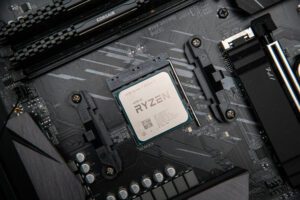Are you an avid gamer looking to enhance your gaming experience? One crucial factor to consider is the display you choose for gaming. With options like TVs and monitors available, it can be challenging to determine which one is better suited for your gaming needs. In this blog post, we’ll explore the pros and cons of gaming on a TV versus a monitor, helping you make an informed decision that aligns with your preferences and budget.
Gaming has evolved into a visually immersive experience, and the display you choose plays a significant role in your overall enjoyment. By understanding the advantages and disadvantages of both TVs and monitors, you can select the best option that caters to your gaming style, desired image quality, and budget.
Join us as we dive into the world of gaming displays, comparing the pros and cons of gaming on a TV and a monitor. By the end of this post, you’ll have a clearer understanding of which option suits your gaming needs and preferences. Let’s explore the possibilities and discover the perfect gaming display for you.
The Pros and Cons of Gaming on a TV
Pros
Larger screen size and more cinematic experience: One significant advantage of gaming on a TV is the larger screen size it offers. With a TV, you can immerse yourself in a more cinematic experience, especially when playing games with stunning visuals and intricate details. The expansive display can make you feel more connected to the game world.
Ideal for console gaming and multiplayer setups: TVs are often the go-to choice for console gamers. They are compatible with popular gaming consoles like PlayStation and Xbox, providing a seamless gaming experience. Additionally, TVs are suitable for multiplayer setups, allowing multiple players to enjoy the game simultaneously on a shared screen.
Suitable for casual gaming and relaxed gaming sessions: If you prefer a laid-back gaming experience, a TV might be the right choice. TVs are great for casual gaming and leisurely gameplay sessions. You can comfortably sit back on a couch or recliner and enjoy your favorite games without being confined to a desk.
Cons:
Higher input lag, affecting responsiveness in fast-paced games: One drawback of gaming on a TV is the potential for higher input lag compared to monitors. Input lag is the delay between pressing a button and seeing the corresponding action on the screen. In fast-paced games that require quick reflexes, high input lag can negatively impact your performance and responsiveness.
Limited refresh rates compared to gaming monitors: Refresh rate refers to how many times the screen refreshes per second. TVs typically have lower refresh rates compared to gaming monitors. Lower refresh rates can result in motion blur and make fast-moving scenes appear less smooth, affecting the overall visual experience.
Potential screen tearing and motion blur issues: TVs may suffer from screen tearing and motion blur due to their response times and lower refresh rates. Screen tearing occurs when the display cannot keep up with the graphics card’s output, resulting in horizontal lines appearing on the screen. Motion blur can make fast-paced action sequences appear blurry, reducing clarity and visual sharpness.
Understanding the pros and cons of gaming on a TV will help you weigh the benefits and limitations before making a decision. While TVs offer a larger and more immersive gaming experience, they may struggle with input lag, lower refresh rates, and potential screen tearing and motion blur. Consider your gaming preferences and the types of games you play when deciding if a TV is the right choice for you. In the next section, we’ll explore the pros and cons of gaming on a monitor to provide a comprehensive comparison.
The Pros and Cons of Gaming on a Monitor
Pros
Lower input lag for better responsiveness and precision: Gaming monitors are known for their low input lag, which means there is minimal delay between your actions and the on-screen response. This is particularly crucial for competitive gaming or games that require quick reflexes, as it provides a more responsive and precise gaming experience.
High refresh rates and adaptive sync technologies for smoother gameplay: Monitors often offer higher refresh rates compared to TVs, typically ranging from 144Hz to 240Hz or even higher. Higher refresh rates result in smoother motion and reduce motion blur, enhancing the overall visual experience. Additionally, many gaming monitors support adaptive sync technologies like AMD FreeSync or NVIDIA G-Sync, which further eliminate screen tearing and ensure seamless gameplay.
Enhanced image clarity and pixel density: Monitors designed specifically for gaming often feature higher resolutions, such as 1440p (QHD) or 4K (UHD). These higher pixel densities result in sharper, more detailed visuals, allowing you to fully appreciate the intricate graphics and textures in modern games. Monitors also tend to have better color accuracy and display quality, providing a more visually stunning gaming experience.
Cons
Smaller screen size, reducing the immersive factor: Unlike TVs, monitors generally have smaller screen sizes. While this might not be an issue for some gamers, those seeking a more immersive gaming experience may find the smaller display less engaging. However, it’s worth noting that there are larger gaming monitors available, such as ultrawide or curved displays, which can offer a more immersive feel.
Limited viewing angles compared to TVs: Monitors typically have narrower viewing angles, meaning the image quality and colors may appear distorted when viewed from certain angles. This limitation can be more noticeable if you’re gaming with friends or in a living room setup where people are not directly facing the monitor.
Less suitable for console gaming or local multiplayer: Gaming monitors are primarily optimized for PC gaming and may not offer the same level of compatibility with gaming consoles. While some monitors do have console-specific features, such as HDMI inputs, they may lack the convenience and versatility that TVs provide for console gaming. Additionally, if you frequently engage in local multiplayer gaming sessions, a smaller monitor might not be as ideal for accommodating multiple players.
Considering the advantages and disadvantages of gaming on a monitor allows you to make an informed decision based on your gaming preferences. While monitors excel in areas like low input lag, high refresh rates, and enhanced image clarity, they may have limitations in terms of screen size, viewing angles, and console gaming compatibility. In the next section, we’ll delve into the key factors to consider when choosing between a TV and a monitor for gaming.
Factors to Consider When Choosing
Gaming Platform and Preferences
Compatibility: Determine the gaming platform you primarily use. While monitors are well-suited for PC gaming, TVs are more compatible with gaming consoles like PlayStation and Xbox. Choose a display that aligns with your preferred gaming platform.
Gaming Style: Consider your gaming style. If you engage in competitive gaming or fast-paced genres that require quick response times, a monitor’s lower input lag and higher refresh rates may be advantageous. If you enjoy casual gaming or prefer a more relaxed gaming experience, a TV’s larger screen size and cinematic feel might be more appealing.
Screen Size and Space
Available Space: Evaluate the space where you’ll be gaming. If you have limited space or prefer a compact setup, a monitor’s smaller footprint might be more practical. If you have ample space and desire a more immersive experience, a larger TV screen can enhance your gaming sessions.
Viewing Distance: Consider the distance between you and the display. For monitors, a closer viewing distance is common, allowing you to fully appreciate the details. With TVs, you’ll likely sit farther away due to their larger size, creating a more comfortable viewing experience for extended gameplay.
Display Technology and Features
Refresh Rate: Determine the desired refresh rate based on the games you play. If you play fast-paced action games, a monitor with a high refresh rate (e.g., 144Hz or higher) can provide smoother motion and reduce motion blur.
Resolution: Decide on the resolution that suits your preferences and hardware capabilities. Monitors often offer higher resolutions, such as 1440p (QHD) or 4K (UHD), providing sharper visuals. TVs generally have a wider range of resolutions available.
Response Time: Consider the response time of the display, which affects how quickly pixels change colors. A lower response time minimizes motion blur and ghosting, ensuring crisp visuals during fast-paced gaming.
Adaptive Sync Technologies: If you have an AMD or NVIDIA graphics card, consider a display that supports AMD FreeSync or NVIDIA G-Sync. These technologies synchronize the display’s refresh rate with the graphics card’s output, eliminating screen tearing and delivering a smoother gaming experience.
Budget Considerations
Price Range: Set a budget for your gaming display. Monitors and TVs come in various price ranges, so determine how much you’re willing to invest in your gaming setup.
Value Proposition: Assess the features and specifications you prioritize the most based on your gaming preferences. Strike a balance between performance and cost to find a display that offers the best value for your budget.
By carefully considering these factors, you can make an informed decision when choosing between a TV and a monitor for gaming. Each factor contributes to the overall gaming experience, so take the time to evaluate your specific needs and prioritize the aspects that matter most to you.
Conclusion
Choosing between a TV and a monitor for gaming is a decision that depends on several factors and personal preferences. Both options offer unique advantages and drawbacks that cater to different gaming styles, platforms, and budgets.
TVs provide a larger screen size and a cinematic experience, making them ideal for console gaming and casual gaming sessions. However, they may suffer from higher input lag, lower refresh rates, and potential screen tearing issues.
On the other hand, gaming monitors offer lower input lag, higher refresh rates, and enhanced image clarity. They are well-suited for competitive gaming and deliver a more responsive and precise gaming experience. Monitors do have smaller screen sizes and limited viewing angles compared to TVs, and they may be less suitable for console gaming or local multiplayer setups.
When making a decision, consider factors such as gaming platform compatibility, gaming style, available space, viewing distance, display technology, and budget. Assess your priorities and find the right balance between performance, features, and cost.
Ultimately, the choice between a TV and a monitor for gaming is subjective. It’s important to evaluate your individual gaming needs and preferences to determine which option will provide the best gaming experience for you. Whether you opt for a TV’s immersive cinematic feel or a monitor’s responsiveness and visual clarity, ensure that your chosen display enhances your gaming enjoyment and immerses you in the virtual worlds you love.



